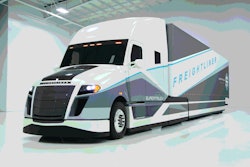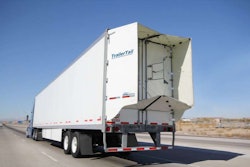During a press dinner at the 2015 Mid-America Trucking Show in Louisville, Ky., Martin Daum, president and chief executive officer of Daimler Trucks North America, shared his company’s optimism for near-term truck sales in North America, saying at the moment the U.S. is one of the few really strong markets in the world.
The North American Class 6-8 market finished the year with roughly 374,000 units sold in 2014, Daum said, and after a fast year-to-date start of 18 percent growth in 2015 compared to last year, DTNA remains optimistic in the near future for truck sales in North America.
“I would say that the entire market could be higher than 10 percent [growth] this year,” said Daum.
DTNA is even more bullish on its forecast of the U.S. Class 8 truck market, with the company forecasting total market sales of 256,000 units in 2015, a 19 percent increase from 2014’s 214,000 units. “This is what drives the industry at the moment and is by far the strongest part of our business,” Daum said, adding that figure could be even higher given the current favorable market conditions.
DTNA forecasts the U.S. Class 6-7 market to retract slightly by 3 percent to 100,000 units after posting a 9 percent increase in 2014, noting this segment is more stable and has less volatility than the U.S. Class 8 market.
In terms of market share, DTNA forecasts it will recoup its slight losses in 2014 (37 percent North American market share) in all NAFTA regions for the Class 6-8 market with 4.4 percent growth in 2015 to 41.4 percent. In the United States, it expects to increase from 38.5 percent market share in 2014 to 42.8 percent this year. Meanwhile, the company predicts its market share to increase in Canada and Mexico by 4.6 percent and 7.1 percent, respectively.
To keep pace with growing demand and record-breaking order intake, DTNA increased its production capacity by 16 percent and added 2,300 production workers in the last half of 2014, which should increase truck production by 27,000 units this year. “There is absolutely no fear that those production slots will go empty. In fact, I have a feeling that it will not be enough,” said Daum.










